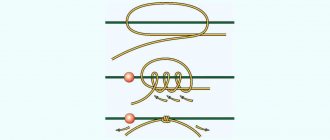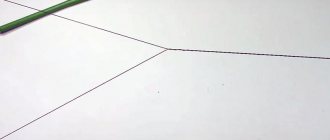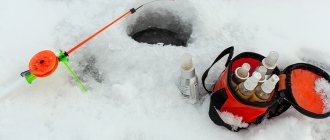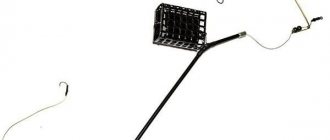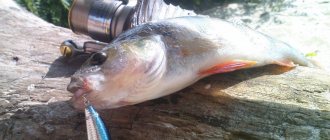We present the most detailed overview of this small but very important piece of equipment. Here you will learn what swivels are needed for, about their existing forms, types, rules for their selection and installation, and learn how to use them. Learn to understand the test, sizes, learn about the best and most reliable methods of attaching a swivel to a fishing line. After reading this article, you will have no gaps on the topic of swivels.
Content
- 1. What is a fishing swivel for?
- 2. Where are fishing swivels used?
- 3. Advantages and disadvantages of swivels
- 4. What types of swivels are there?
- 4.1 According to form
- 4.2 Double swivel
- 4.3 Triple swivel
- 4.4 Triple swivel equipment
- 5.1 Attaching the swivel to monofilament line
- 5.2 Attaching the swivel to the braided line (cord)
- 5.3 Attaching the swivel to fluorocarbon line
What is a fishing swivel for?
A fishing swivel is one of the elements of the equipment, which is a simple device consisting of rings connected by a rotating hinge.
The task of any swivel for fishing is to prevent the fishing line (monofilament or braid) from twisting, maintain its integrity, and make it quick and easy to change bait.
The quality of a swivel lies in the ability of the rings to easily rotate in different directions, taking on the twisting of any element of the equipment and closing this twisting on itself, without transferring it to another element.
The main thing is the ease of rotation of the swivel loops. If the swivel does not rotate perfectly, then its attachment and purpose in the equipment loses all meaning. The ideal work of the swivel decides the outcome of landing fish, such as carp, eel, catfish, barbel, and sea fish - shark, garfish, which are capable of fighting the fisherman for their freedom to the last.
Part XIII. Swivels for carp fishing – Carptoday school
The main problem that a carp angler faces when he thinks about creating a carp rig is choosing the right swivel. The abundance of different modifications, sizes and companies that produce swivels is sometimes overwhelming. The shelves of carp stores are littered with small things and it is sometimes almost impossible for a beginner to figure out what’s what. Some advice in the form of articles describing equipment helps, but they cannot give a complete picture of the world of swivels. In fact, everything is much simpler than it seems.
In order to sort out the world of swivels, you need to remember that swivels are divided into two groups: without a swivel (simple swivels - two rings and a barrel in the middle) and with a swivel (simple swivel + additional ring). Each of these groups is divided into two more subgroups: on both sides there are rings or hooks (they are also called quick releases). That's basically it. The article can be finished. Oh yes! There are also specialized swivels that were created specifically for certain conditions, or the creation of which was dictated by some kind of equipment. For example, in order not to open the swivel hook with pliers every time, they created a special swivel for the Ronnie-rig. Although, you know... It’s still worth taking a detailed look at the world of swivels. Surely, as the story progresses, we will be able to remember and share various small features of using certain models.
Why are swivels needed at all?
Swivels are a must-have element of fishing equipment if you fish with a rod and reel. This applies not only to carp fishing, but to any fishing in general. Swivels are also used in spinning rods, for example. The main task of the swivel is to prevent the line from twisting when reeling the rig out of the water. The fishing line tends to twist into a spiral, and the freely rotating swivel just counteracts this process.
What should you pay attention to?
The most important thing you should always pay attention to is the ease of rotation of the loops on the swivel. If there is no perfect rotation, then all the point of using a swivel is lost. Often, it is the perfect work of the swivels that decides the outcome of landing fish, especially such strong ones as carp, which fights to the last.
Where is the swivel used?
Since carp fishing is carried out, in most cases, from the bottom, the swivel is used directly in front of the leash. Be sure to check the swivels for defects during manufacturing to avoid cutting off the assembly.
Swivel sizes
In some varieties of swivels you may find two sizes. As a rule, one is a classic one and the other is a smaller version. Smaller versions are available for those who like more delicate fishing. Or, if you suddenly have to shrink during an incredibly capricious bite. There are also swivels that can have three sizes. The logic here is simple - the more delicate you need the equipment, the fewer swivels we choose.
Swivels without hinges
A simple swivel (a barrel in the middle, two rings at the edges) is the source of all swivels. Today it is used extremely rarely, because there are more convenient and thoughtful models that appeared later. Probably the only use for a swivel without additional sections is as a pop-up attachment to a D-rig section. And then, this swivel is used strictly in the mini version.

Quick release (barrel in the middle, ring on one end, hook on the other) - in 99% of cases it is used to attach a leash. More precisely, not only the fastening, but its quick replacement. The classic “loop to loop” method, which is used by floaters, or feeders, is extremely good and convenient. But every time you have to cut the leash. That's why they came up with a special swivel. You simply put the leash loop on the hook and close it with a piece of silicone or a conical anti-twist. Quick release swivels are one of the most commonly used options!
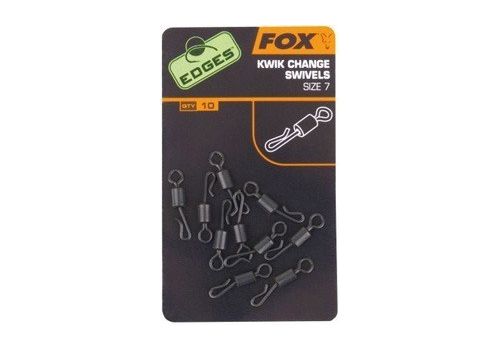
Swivels with hinges
The hinge adds additional freedom to the rig. Hinges can be different - just an added ring, or a whole system when two swivels are connected from different sides to one ring. The use of swivels allows us to have additional flexibility in the rig that may be lacking when using a single swivel. A striking example of this is inline editing. If you insert a simple swivel with a quick release, it will stick out too hard from the sinker. And the hinge will add flexibility.
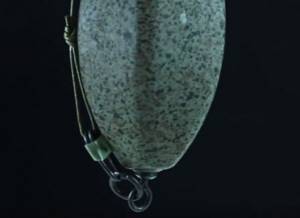
In other cases, the swivel ring allows you to slide the leash directly onto the leadcore. This is needed in rigs such as a chod rig or a hinged stiff rig. A regular swivel ring is unlikely to move freely on the leadcore, it is too thick for its ring. We will consider more complex, multi-component swivels below in a separate paragraph.
A classic example of a swivel, which is put on the leadcore to make it easier to change the leash for fishing with the “Helicopter” rig. They also catch fish with a chod rig on a helicopter.
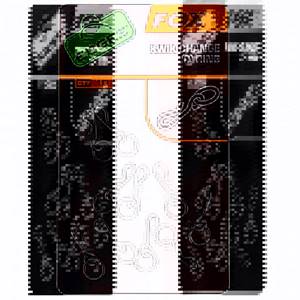
Quick Release Clasp
It is also called a wire swivel. Not as heavy as a swivel because there is no barrel in the middle. But there is no effect of anti-twisting of the equipment. Its main use is to attach weights, which can be easily placed around a ring and closed with a silicone tube. The ring on the sinker is thick and powerful enough so that the weight does not come off in flight. Therefore, if you made a swivel for the sinker, it would be huge. And the miniature clasp eliminates all problems.

Micro swivels
Micro swivels are used directly on the hooks. They became a replacement for the rings to which boilies were attached. A micro-swivel with a ring is preferable because it adds mobility to the nozzle while holding the boilie very securely. The first ring and barrel fit into the body of the boilie, and the hinge allows it to move much more freely than the ring. If we talk about micro-swivels without a swivel joint, they are used on the D-section of various leashes. Here the swivel joint is not so important, since the nozzle already slides freely over the material. Also, micro-swivels without a ring are suitable for chod-rigs, etc. Today, the micro-swivel has practically replaced the ring as a way to attach a boilie directly to the fore-end itself. If you need to put the boilie on the hook itself, then take a micro-swivel with a ring.
Specialized swivels
Swivel for the Ronnie rig - Gardner C-lok Flexi Ring - a special swivel that was invented for use in the Ronnie rig. Previously, you always had to bend the hook of a regular swivel with pliers, but now this need has disappeared, because the hook wire fits perfectly into the rounded hook. In the video below you will see just the version with a classic swivel; with the C-lok Flexi Ring it will be much easier!
The winding ring is from Gardner, which belongs to the class of swivels, but it can also be mistaken for a round quick-release clasp. The uniqueness of this ring is that you can turn any swivel into a swivel with a hinge. You can also hang it on the leadcore and attach a leash to it when fishing with a helicopter. The swivel is called a Q-ring and can very often help out in situations where, for example, it is not possible to take an articulated swivel. You can easily make a hinge with your own hands.
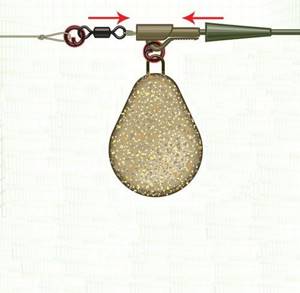
Quick Release Swivels - Gardner Corkscrew and Link Lok - These swivels are a mix between a quick release and a hook swivel. You simply draw the loop of the leash in a spiral and don’t even need to cover it with a tube or anti-twist. These swivels are well suited if you like to use thick leader materials with increased strength. Often they can be a little difficult to get inside the hook of a regular quick-release swivel, but with these two models of swivels there will be no problems.
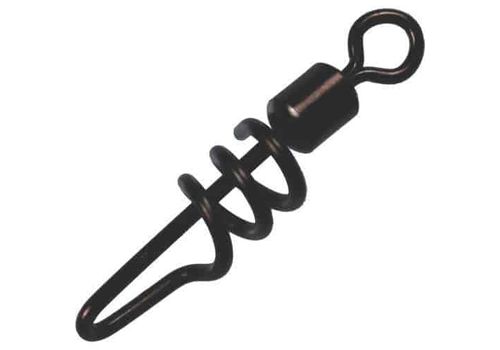
FOX compound swivels
They are two connected swivels with a ring between them. They are designed for fishing with a detachable sinker for inline mounting. Nowadays, detachable sinkers are at the peak of popularity in England, since they allow you to keep the fish’s lip more intact than when fishing with a heavy load. Also, in the event of a break, the fish can easily free itself from the leash, and will not be able to get stuck anywhere due to the weight hanging on a piece of torn equipment.
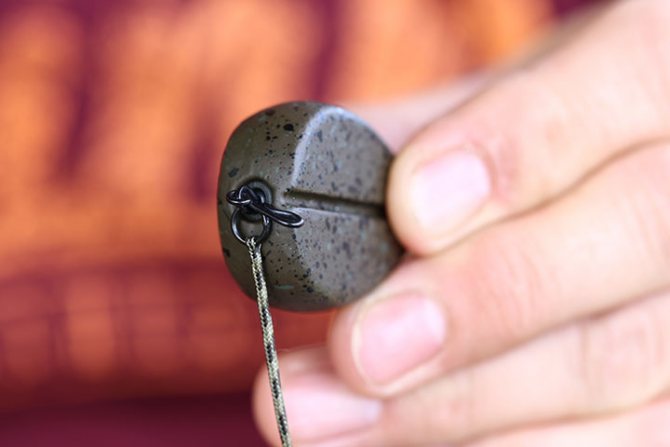
The swivel mentioned above is a successor to the two-ring swivel. Just added a quick release instead of one of the rings. This model is also designed for fishing with a detachable sinker. Only here you already have a choice - to insert a quick-release fastener into the ring, or a Q-ring from Gardner. In any case, the only difference is in the way the leash is attached. The purpose of this swivel is to release the sinker when biting, just like the previous model.
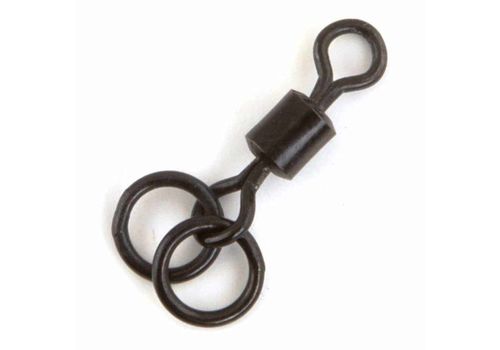
Swivels for PVA Solar
A very convenient swivel for attaching a PVA stick. The difference is that you simply insert a knot into the wide part of the swivel and insert the thread into the narrow part. The knot will be on the outside and will not be able to fall out. You simply attach the leash to the mesh outside. On the one hand, it is more convenient, on the other hand, it adds unnecessary elements to the equipment, which not everyone always likes. But there is such a swivel and you can safely try it. If the results are not affected, then you can continue to use it. We still prefer to thread the leash through the stick mix.
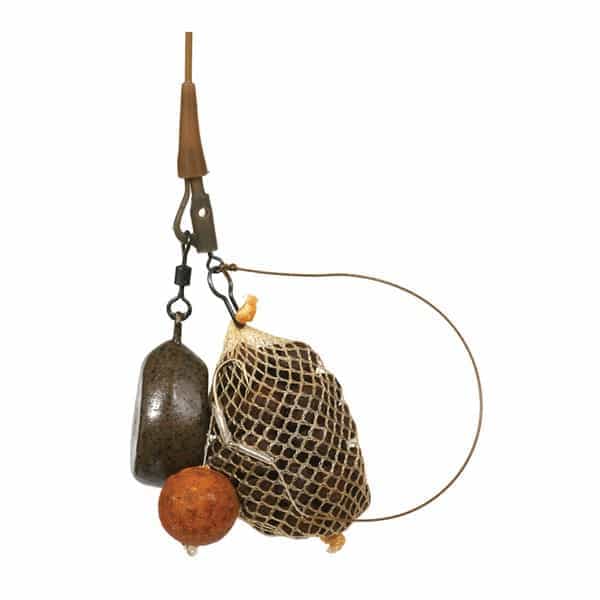
Full or partial copying without the consent of the portal editors is prohibited
Where are fishing swivels used?
Swivels for fishing have found their application in almost all types of fishing, including spinning, for example, when using jig baits, in drop shot rigs, with spinners or wobblers, and also in fishing with a retractable leash.
In what gear and where is the swivel placed:
- in float gear, a small swivel is attached (loop to loop) at the end of the main line in front of the outlet leash.
- in spinning fishing - in front of the bait, as well as in front of the leash, found in sbirulino or bombard rigs;
- when fishing with a feeder, the swivel is placed at many mounting points, depending on its design;
- in bottom rigs - in front of the leash.
In a word, if you feel that your equipment can get twisted in any place, then attach a swivel.
What is a swivel and what is it for?
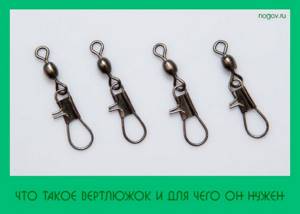
What is a swivel Fishing swivels are an important and indispensable part in connecting all kinds of equipment. Such insignificant “small things” play an important role, since they can save the tackle from tangling and breaking.
The Pisces-Pisces company offers the largest selection of this miniature, but quite necessary piece of equipment. This is a small fishing part with two eyes on the edges, which, due to its rotating design, does not allow the fishing line to twist. They are used in feeder and spinning equipment. They are often used in conjunction with a clasp (carabiner). The fishing line is attached with a knot to the swivel itself, and the bait is secured in the clasp.
Why do you need a fishing swivel?
The purpose of any swivel for fishing is to prevent the fishing line (braid or monofilament) from twisting, to make it convenient and quick to change the bait, and to maintain its integrity.
The operational quality of the swivel lies in the ability of the rings to rotate in different directions without much effort, personally taking upon themselves the twisting of any component of the equipment and locking such twisting on themselves without transferring it to another component.
The main task is the ease of rotation of the swivel loops. If the swivel cannot rotate perfectly, then its purpose and fastening in the equipment loses any meaning. The perfect operation of the swivel can decide the outcome of fishing, such as barbel, catfish, eel, carp.
Where are fishing swivels used?
Swivels for fishing have found their use in almost numerous types of fishing, including spinning, for example, when using jig baits, in drop shot equipment, with wobblers or spinners, as well as in fishing with a retractable leash.
In what gear and where is the swivel placed:
- in spinning fishing - in front of the leash, as well as in front of the bait, found in bombard or sbirulino rigs;
- a small swivel in float gear is attached (loop to loop) at the end of the main line in front of the outlet leash;
- the swivel is placed at various mounting points when fishing with a feeder, based on its design;
- in bottom rigs - in front of the leash.
In other words, when you foresee that all your equipment in any area will be able to twist, then strengthen the swivel.
Pros and cons of swivels
Pros:
- protects the fishing line from rapid wear;
- prevents the line from twisting;
- ability to fish on water with strong currents;
- speed of replacement of equipment parts.
Minuses:
- excess weight in equipment, which adversely affects the quality of equipment;
- visibility in the water element;
- For professional fishermen, the extra weight of the swivel can be a problem.
Useful tips for using fishing swivels
Any swivel is designed for a variety of loads. Swivels must be selected based on the total weight of the equipment; in other words, the weight of the swivel you use must be equal to the weight of the leash. When you don’t adhere to these standards and install, say, a heavy swivel on a thin leash, then you can expect breaks, and on the contrary, installing a light swivel on a thickened thread will not affect the twist of the fishing line, then such a purpose loses all meaning. You can choose and buy fishing swivels in St. Petersburg in the Fish-Ryb store, which offers products from the world's leading manufacturers.
Before installation, check the swivel for any defects. Please be aware that swivels are designed for a variety of loads. Pay attention to this when installing gear, so that the expediency of use does not turn into a cause of disappointment. Remember also about the invisibility of the swivel in the water element - this is an important circumstance for successful fishing!
Advantages and disadvantages of swivels
Advantages:
- prevents the line from twisting;
- protects the fishing line from rapid wear;
- speed of replacement of equipment elements;
- opportunity to fish on water with strong currents.
A detailed article about monofilament fishing line, its characteristics, features, advantages and methods of attachment here
Disadvantages of using a swivel:
- visibility in water;
- additional weight in the equipment, which negatively affects the reliability of the equipment;
- For professional fishermen, the additional weight of the swivel can be a problem.
If you are interested in information about braided fishing lines, their properties and characteristics, then read this article
Sliding float with one attachment point
The easiest way to attach a sliding float. Thread the line through the float ring and that’s it, secure it with a stopper. This float mount is intended for fishing in still water if the depth is more than 2.5–3 meters.
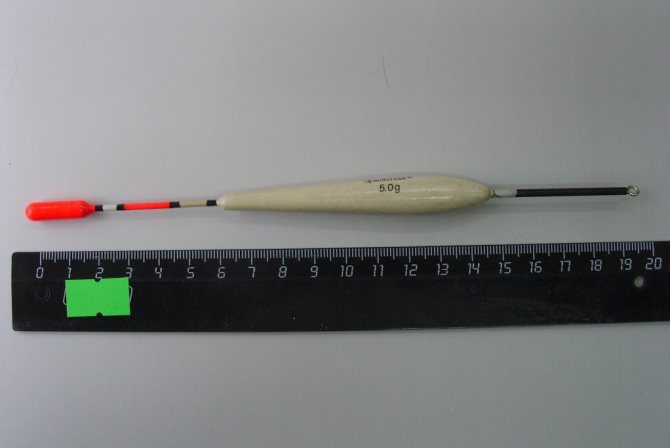
Choose a float with a metal assembly. Experience shows that the plastic rings of the float are quite brittle and there is a possibility of losing the float when casting or hitting the water.
Most fishermen use a swivel with a carabiner to attach a sliding float.
This allows you to quickly replace the float in case of breakdown or simply install another larger one.
In this case, a swivel with a carabiner attached to it is threaded onto the main line, and a float is installed on the carabiner. By the way, about the size of the float.
The float, and in particular the tip, should be easily distinguishable on the water, and the length of the tip does not in any way affect the quality of the bite.
A sliding float does not have to be small, especially if you have a thick fishing line, but you shouldn’t take a large one either.
What types of swivels are there?
The swivel is not a simple element; like many others, it has its own size range, numbering, which coincides with the numbering of fishing hooks, is designed for equipment of different weight categories, and has its own colors and configurations. As a rule, they are made of steel, brass, nickel and other alloys.
4.1 According to form
According to their shape, swivels are:
- wire (made from wire);
- cylindrical (barrel-shaped);
- framed or framed (the most popular type, having two rings);
- with bearings (mainly for sea fishing);
- ball
This is what a swivel with a bearing looks like
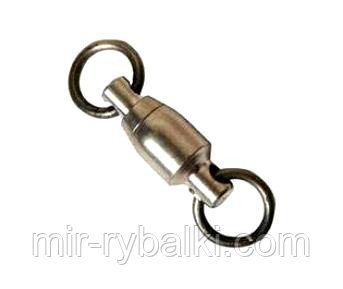
In addition, swivels can come complete with various fittings:
- swivel + clasp, used for quickly changing the nozzle or leash;
- swivel + carabiner, a reliable tandem, also serves for the convenience of changing attachments;
- swivel + feeder or sinker serves to minimize equipment elements in some types of fastening.
4.2 Double swivel
Such swivels are used when equipping a retractable leash and in sea fishing with light baits.
4.3 Triple swivel
The stores offer various variations of swivels, including triple ones: cylindrical, oval, etc. As for efficiency, both forms have no advantages in this regard; they are the same. The question of choice remains only with the fisherman, who must rely on his own preferences.
Thus, the swivel can act in the form of a “train” of swivels, which is used, for example, when hunting for trout with a float rig, also in installation with a leash, between a treble hook and an oscillating spoon for catching garfish.
Such a chain does not allow active fish to use an artificial bait in order to free themselves from a tenacious hook. If one of the upper loops of the swivel is fastened to the factory ring on the lure, then the lower part remains with the carabiner, which allows you to change the hook in a timely manner.
The area of application of the triple swivel is spinning fishing, also in the equipment of a retractable leash or the so-called “Moscow”.
Let's look at some triple swivel designs.
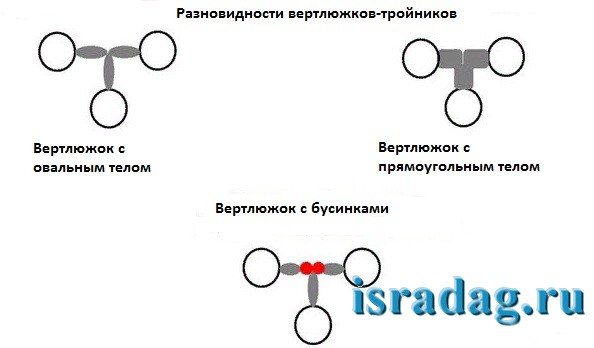
For example, triple swivels with beads are used less frequently, since this element of decoration can provoke prey to attack the tackle with its shine and thereby create a false bite.
In general, it is recommended to take into account the color of the water of the reservoir and select swivels so that there is no excess glow or shine. For example, if you have a waterproof black marker in your arsenal, you can paint the swivel and achieve the desired camouflage coloring of the swivel.
Advantages of tee swivels:
- simplicity in tying the cargo and convenience in selecting the desired weight of this cargo.
- If the leader breaks, the rig can be easily revived and fishing can continue.
- The fishing line gets tangled less.
4.4 Triple swivel equipment
Rigging using a triple swivel involves attaching a monofilament leash with bait to the side ring, the main fishing line is attached to the lower and upper swivel, then the leash with a sinker. In this design, it is important that the fishing line with bait weighs less than the fishing line equipped with a load, that is, the breaking load of these fishing threads is important. This parameter must be provided so that if the bait gets caught, only it will come off, and if the load gets caught, the load will come off.
How to tie a swivel to a fishing line
5.1 Attaching the swivel to monofilament line
Monofilament fishing line is the most flexible and convenient for tying knots.
The classic knot for tying a monofilament to a swivel is the Grinner knot. The strength of such a knot is 85%; on how to correctly tie two elements of equipment, watch the video from the channel “On the Hook”
An even stronger knot for fastening the swivel and fishing line is the Homer knot. For practical recommendations on the knot technique, see the example of tying to a hook from the FishingVideoUkraine channel
Fisherman Andrey Slepnev will demonstrate to your attention the simplest and most effective methods of installing a swivel to a fishing line
5.2 Attaching the swivel to the braided line (cord)
The methods demonstrated above can also be applied to braid, however, when knitting a cord, one should take into account its characteristics, which are radically different from monofilament, therefore the knots should be stronger.
The best and most reliable knots for braided cord are demonstrated here
5.3 Attaching the swivel to fluorocarbon line
The rigidity of this fishing line also determines the type of knot. Most anglers prefer to attach the swivel to fluorocarbon using the “loop-to-loop” principle; this type of binding is usually called “surgical” or “surgical knot”.
Watch the channel “Encyclopedia of Popular Nodes”
Tips on how to choose a swivel based on its shape
The use of one or another form of swivel, as we have already said, depends on the preferences of the angler, but also on the type of gear used. Let's try to understand this issue.
If you have a float rod and you are targeting medium-sized but very cautious fish, use a small barrel swivel, which will make your rig more durable and invisible in the water. If such gear is used for bottom fishing on water with a fast current, then a triple swivel will be irreplaceable.
And if you are interested in spinning fishing, then the frame type of the swivel will ensure reliability. Why exactly he you ask? Take a closer look and you will see the heads of its rotating parts.
So, if you periodically look closely at the structural parts of the swivel, you can notice abrasion or breakage in time and replace it accordingly. Also, wire swivels have a similar design and advantage in this regard. But a cylindrical or barrel swivel cannot be visually assessed and promptly replaced in case of wear. This will become known only during fishing. For example, a wire triangular swivel is miniature, but it has only one rotating unit, while a frame swivel has two, which increases the chances of the fishing line not twisting.
In sea fishing, for example when fishing in the Mediterranean Sea of Israel, it is better to install larger and more reliable swivels, for example, ball or bearing swivels.
Swivels
This small-sized part prevents the line from twisting in many fishing tackles, and the bait itself “plays” freely when a swivel is installed between the bait and the line (or leash). True, in some gear, most often in spinning rods, sometimes a special sinker with a displaced center of gravity (eccentric sinker) or an anti-twist is used to prevent the fishing line from twisting. Quite often, a swivel, both in specialized literature and in conversations among themselves, fishermen call this part incorrectly - a carbine. Despite its small size, this part is very important, even installed in the tackle, but not working well, it can not only negatively affect the “game” of the bait, but also lead to twisting of the line, and this means a line break, loss of the trophy... Therefore, choose this small part with great attention. Of course, you can always find swivels on sale, and of a wide variety of designs, each of which has its own advantages and disadvantages. The most widely used swivels are frame-type, wire, and barrel-shaped.
Which form to choose? To a certain extent, the choice also depends on the type of gear you will have to use to catch fish. For example, for a float rod, when you intend to catch small but very cautious fish, a small barrel-shaped swivel is quite suitable. It will be little noticeable and quite durable. But if a spinning tackle is equipped with a swivel, then, perhaps, a frame-type swivel will be more reliable. It is more reliable; it has forked heads for the rotating parts of the swivel. This. the assembly can always be carefully examined under a magnifying glass, the wear of the head can be noticed in time and promptly rejected by replacing the swivel with a new, serviceable one. This check must be carried out in advance, before leaving for fishing. The heads of the rotating assembly are also visible in swivels made of wire. These swivels are small in size and quite reliable. But it is almost impossible to check the reliability of a cylindrical or barrel-shaped swivel, and such a swivel can fail the fisherman at any time. Although outwardly the swivel looks very attractive, and in the water it does not offer much resistance when retrieving the bait, but... The triangular wire swivel is miniature, but it only has one rotating unit, but in the frame one there are two - there is a greater chance that even with use quite light bait, the line will not curl. In order for the swivel to work reliably and easily, you need to not only examine it carefully under a magnifying glass, but also try to grind the heads of the swivel rings, for example, using a drill and GOI paste. If you still cannot find the swivel
, then you can do it yourself. Of course, this is a rather painstaking task, requiring some experience and tools, but if you still need a reliable swivel, then you will have to get down to business. Quite simply, although it seems somewhat more complicated than other designs, you can make a frame-type swivel. It can be made from a brass strip 3-3.5 mm wide and 0.5-0.7 mm thick. Using the end of a thick sewing needle or a sharp awl, you need to mark the location of the holes on the metal strip, and then drill them with a millimeter drill. If it is not possible to drill with such a drill, then the holes can be punched with a gramophone needle, placing a hard lining under the record, for example, a wooden plate. As the hole widens, the strip must be turned from one side to the other. After preparing the holes (carefully clean the edges so that there are no burrs!) fold the plate along the dotted lines in the form of a rectangle, insert two pins into the holes and twist their ends into a loop. An even twist can be done using pliers, rotating the loop of a pin, for example, with a nail. The finished swivel can be made to rotate easily using a paste drill, and such a swivel will not let you down! You can make a reliable swivel similar to a frame swivel using a brass or copper tube with an outer diameter of about 5 mm. Approximately every 5 mm, you should drill holes for pins, and then cut the tube into 2.5 mm pieces, insert two pins and tighten, as mentioned above. You will get a reliable and durable swivel in the form of a ring.
Swivel test
In this paragraph we will talk about how to understand the weight characteristics of the swivel and choose the right one.
If you purchase swivels, pay attention to the packaging. Well-known manufacturers indicate the test in kilograms. This figure gives you information about how much force needs to be applied to the swivel so that it stops freely moving (rotating). In addition, the test should be equal to the test of the fastener you are using and the breaking strength of the line. For example, for leashes with a breaking parameter from 7 to 9 kg, it is enough to install a swivel from No. 7 to 10. If you use a very thin leash, then feel free to use a swivel No. 12-16. We do not recommend taking very small swivels, as you need to remember that they are very fragile and can fail under increased load.
Selection of hooks
Hooks are selected according to the type of fish you are going to catch. But if, for example, you don’t know what kind of fish is in the pond? In this case, the hooks are matched to the line you are using.
If you have a line from 0.12 to 0.20 mm and a fish weight of up to 1.5 kg, use hooks No. 5–7 according to the international designation. A good hook should be made of thin wire, have a sharp end and a small barb.
There are quite a few options for bending the hook and this is due to the fact that a large number of baits are used (bloodworms, worms, corn, various insects).
Useful tips for using fishing swivels
Each swivel is designed for different loads. Swivels should be selected based on their total rig weight, that is, the weight of the swivel you use should be equal to the weight of the leash. If you do not adhere to this rule and, for example, place a heavy swivel on a thin leash, then breakages cannot be avoided, and vice versa, a light swivel on a thick thread, then its purpose loses all meaning, since it will not be able to influence the twist of the fishing line.
Don’t forget about the invisibility of the swivel in the water - this is an important condition for successful fishing!
Before proceeding with installation, check the swivel for defects.
Be sure to wet the line so that when tying it does not heat up and thereby weaken the strength of the knot.
The fishing line that will be connected to the swivel should be round and not flat, which is typical for braided fishing lines, since such fishing lines do not hold a knot and are easily twisted.
Stopper system for setting the required depth
To set the required depth, the movement of the float is limited by stoppers. The upper stopper of the float is set at such a distance from the hook that the tackle should sink into the water, thereby reaching the hook with bait to the bottom.
When using store stoppers, it is recommended to install a rootstock on the equipment, as they hold well at first, but quickly wear out and slip off during casting.
The lower float stopper is adjustable depending on the depth at the fishing spot. If you know the depth of the reservoir in the fishing zone, then this will not be difficult.
If not, then make a couple of test casts. With this you will adjust the depth, set the float stops, and practice your accuracy and correct casting.
When using a sliding main weight, stoppers are also used. During casting, the main load falls on the upper stopper of the sliding weight. Therefore, it must be securely fixed to the fishing line.
It is best to use the stopper - stopper assembly - stopper system. Many fishermen will say that this is unnecessary reinsurance and why so many extra knots.
But practice shows that there are no difficulties when passing through the rod guides when casting, and the weight will be where it should be.
